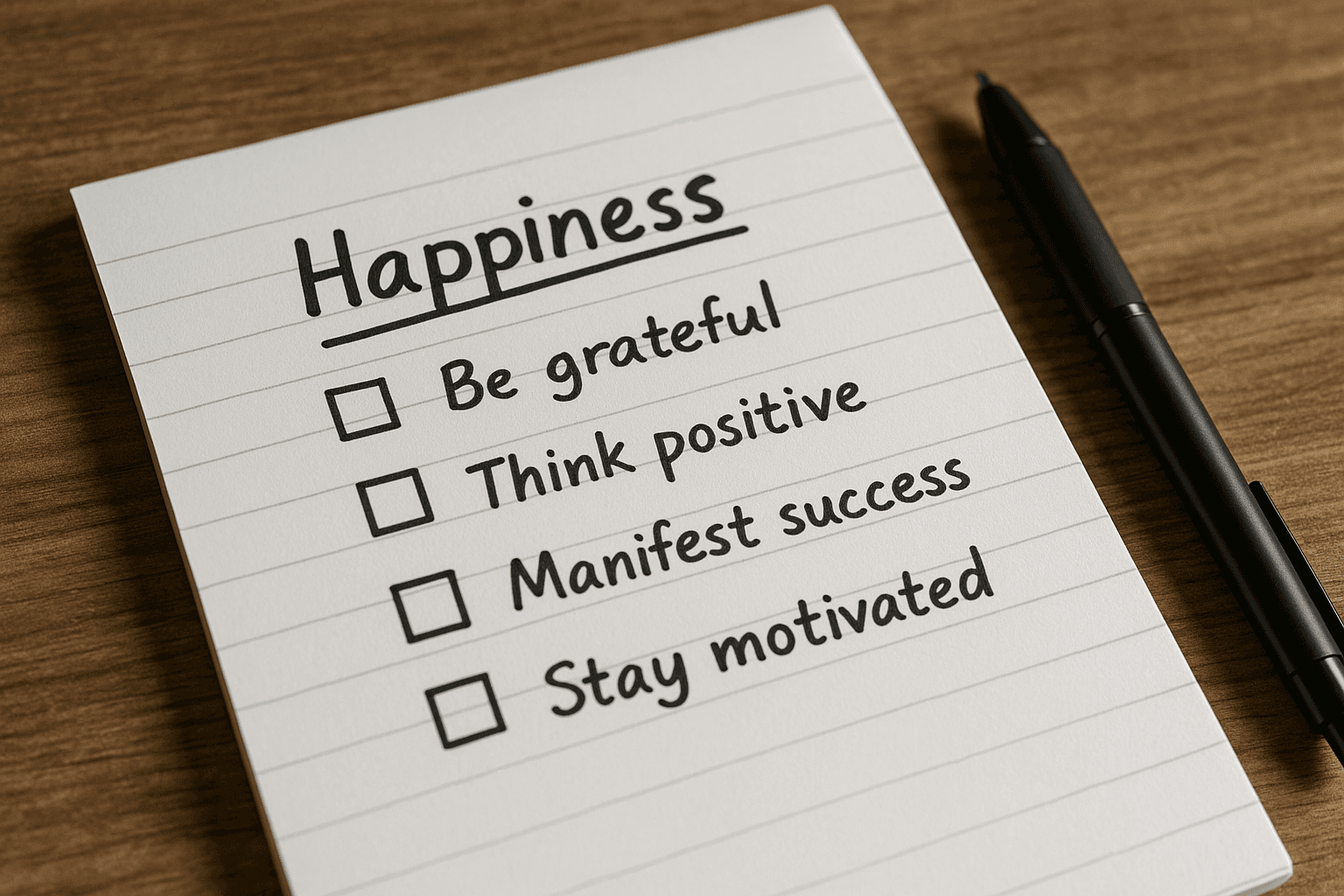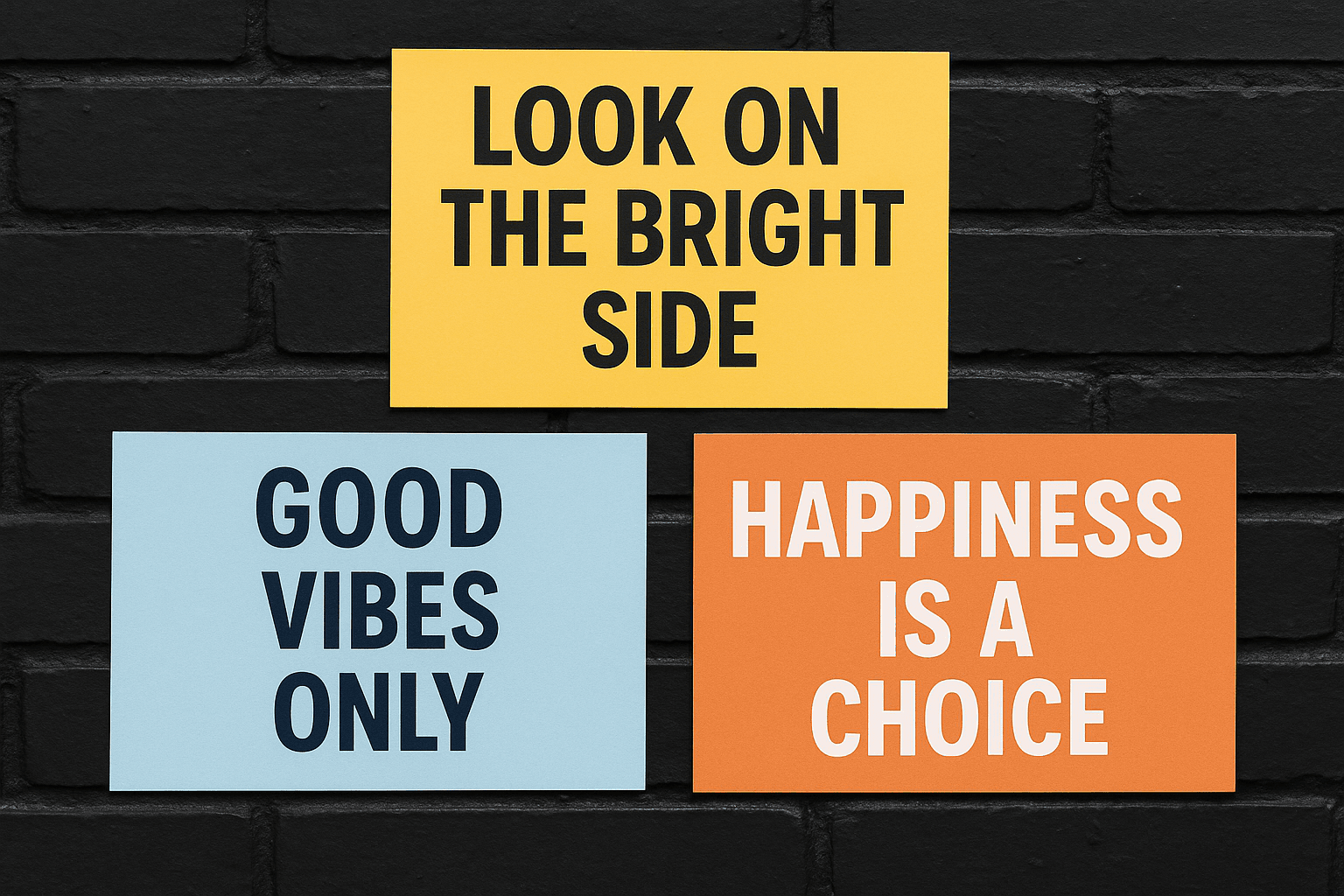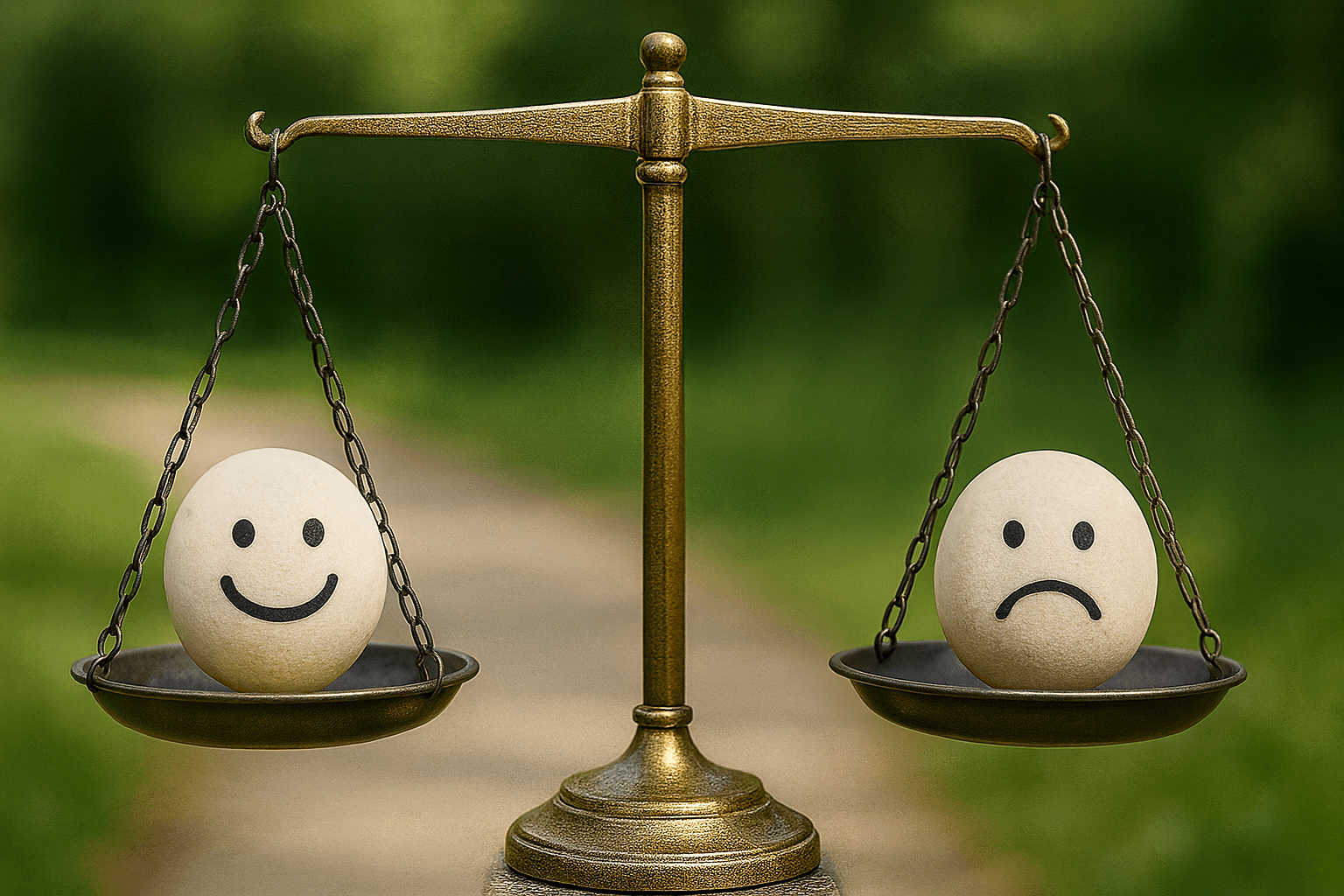The Dark Side of Happiness: Why Chasing It Can Make You Miserable
GT
Introduction – The Happiness Illusion

She sat in her car at the end of another long day, scrolling through a feed of smiling faces. Everyone looked happier, healthier, and more at peace. Someone had just finished a marathon. Another posted their morning gratitude ritual. One friend had quit her job to “follow joy” and was glowing in every photo.
She had done everything the books and podcasts said to do. Meditation. Gratitude journaling. Clean eating. Yet a dull heaviness still sat in her chest, quiet but constant. She whispered a thought that many people have, but few admit: What’s wrong with me? Why can’t I just be happy?
That moment captures the paradox of modern happiness. We are surrounded by advice on how to find joy, yet many people feel anxious, empty, or disconnected. The more we chase happiness, the harder it seems to hold.
This article explores why that happens. It uncovers how the constant pursuit of happiness can backfire, how toxic positivity damages emotional wellbeing, and how to build a life that values balance and meaning over endless cheerfulness.
When Happiness Becomes a Task

For many people, happiness has become another item on the to-do list. Be grateful. Think positive. Manifest success. Stay motivated. Yet somehow, the harder we try, the less satisfied we feel.
Psychologists describe this as the hedonic treadmill. The brain’s reward system quickly adapts to new experiences, meaning every emotional high fades sooner than expected. A new job, car, or relationship might lift you up for a while, but within weeks your mood settles back to its usual level. It’s not personal failure; it’s biology. The brain was built to notice change, not sustain bliss.
When we treat happiness like a goal to achieve, we begin to measure our emotional life in unrealistic ways. If we feel sad, we assume something must be wrong. If joy fades, we believe we’ve lost control. The chase becomes endless, and guilt creeps in whenever we fall short.
Pro Tip:
Stop aiming for constant highs. Instead, notice small, genuine moments that carry meaning. A walk, a kind word, or a quiet laugh. The brain registers these as steady emotional nourishment, not fleeting hits.
The Rise of Toxic Positivity

Modern life is flooded with messages that tell us to “look on the bright side.” “Good vibes only.” “Happiness is a choice.” On the surface, it sounds encouraging, but underneath, something more damaging is at work.
Toxic positivity happens when we deny or dismiss painful emotions in the name of optimism. It’s the moment you tell a friend “everything happens for a reason” instead of sitting with their pain. It’s the moment you feel low and instantly pressure yourself to cheer up.
Research on emotional regulation shows that suppressing emotions doesn’t erase them. It pushes them deeper into the body. Cortisol rises, tension builds, and the mind becomes restless. Over time, the body carries the cost of all that pretending.
This emotional mismatch is known as emotional dissonance. You act fine, but inside you’re not. Over time, it wears down mental energy and creates a quiet sense of disconnection.
Reality Check:
Avoiding discomfort doesn’t create happiness. It only postpones healing. The healthiest people are not those who feel good all the time, but those who allow feelings to move through them safely.
Coach’s Insight:
Happiness is not proof of worth. Feeling low does not mean failure. Emotions are data, not enemies. Let them speak before you rush to silence them.
The Brain’s Balance System

The human brain is designed for balance, not permanent joy. It constantly seeks homeostasis, a state of internal stability. When you experience intense highs or deep lows, your body and brain naturally pull you back towards equilibrium.
Serotonin plays a key role in this process. It helps stabilise mood, counteracting the sharp spikes of dopamine that come from temporary pleasure. The prefrontal cortex also plays its part, helping you understand and label what you feel so you can respond wisely instead of reacting impulsively.
People who practise emotional awareness have stronger regulation networks in the brain. When they feel anger, sadness, or fear, they can name it clearly, which calms the amygdala, the brain’s fear centre, and helps them recover faster.
Pro Tip:
Try the “name it to tame it” approach. When you feel off, say it out loud. “I feel tired.” “I feel disappointed.” “I feel anxious.” Naming your emotion lowers its intensity and brings your prefrontal cortex back online.
The Cost of Constant Cheerfulness

Many people feel pressure to perform happiness. Workplaces expect positivity. Families encourage smiles. Social media rewards the appearance of joy. The result is a culture where people fake optimism to fit in.
This performance comes at a cost. Emotional labour, the effort of managing feelings to meet expectations, drains energy fast. Studies show that people who constantly suppress emotion are more likely to burn out, withdraw socially, and struggle with anxiety or sleep issues.
Pretending to be happy also dulls your emotional range. When you numb sadness, you accidentally numb joy. The entire emotional spectrum becomes muted, and life begins to feel flat.
Reality Check:
You don’t owe the world a cheerful version of yourself. Realness is what truly connects us, not relentless positivity.
Coach’s Insight:
You don’t need to shine all the time. Being genuine gives others permission to be human too. That is far more powerful than pretending to be perfect.
Meaning Over Mood

Let’s return to the woman in her car. Over time, she begins to notice something. The days that feel good aren’t necessarily the ones filled with excitement or smiles. They’re the days that feel right — when she helps a colleague, listens to a friend, or takes a quiet moment to breathe. It’s not joy she’s craving; it’s meaning.
Psychologists call this difference hedonic happiness versus eudaimonic happiness. Hedonic happiness is about pleasure and comfort. Eudaimonic happiness is about purpose, growth, and contribution. One fades quickly; the other builds a deep sense of fulfilment.
Research from positive psychology shows that meaning-focused individuals report higher life satisfaction and lower stress over time. They still feel negative emotions, but those feelings make sense in context. Pain has purpose. Struggle becomes part of growth.
Coach’s Insight:
Stop asking “Am I happy?” and start asking “Am I aligned?” Alignment means your actions match your values. When you live from that place, peace becomes stronger than mood.
Redefining Emotional Wellbeing

The goal isn’t to feel happy all the time. The goal is to build emotional resilience, the ability to experience a full range of feelings without being overwhelmed by them.
Here are practical ways to shift from happiness-chasing to balance-building:
- Normalise emotional lows. Sadness, anger, and fear are part of being alive. Accept them as teachers, not threats.
- Practise self-compassion. Speak to yourself with kindness, especially when you feel unmotivated or low.
- Replace “positive thinking” with “accurate thinking.” Optimism helps, but honesty heals. Face reality before trying to fix it.
- Schedule rest. Your emotional system needs downtime. Stillness allows the brain to process and reset.
- Focus on what matters. Ask, “What did I learn today?” instead of “Was today good?” It shifts your attention from chasing pleasure to finding purpose.
Pro Tip:
Keep a “truth journal.” Each night, write one honest line about how you really felt that day. No judgement. Over time, this builds self-awareness and quiet confidence.
Reality Check:
You can’t force joy. But you can build a life steady enough to welcome it when it comes, and to let it pass when it goes.
Conclusion – The Freedom in Feeling

The dark side of happiness isn’t sadness; it’s denial.
Chasing happiness turns life into a performance. It makes emotions something to control rather than understand. But when you stop running and start listening, you realise that happiness is just one part of a bigger emotional story.
Real emotional wellbeing isn’t about smiling through everything. It’s about presence. It’s the ability to feel, recover, and stay kind to yourself through it all.
This week, when you catch yourself thinking, “I should be happier,” take a pause. Ask instead, “What is this feeling trying to tell me?” You might discover that peace was never hiding in the happiness you were chasing, but in the honesty you were avoiding.
Final Thought
Happiness isn’t something to capture. It’s something that follows when you live truthfully and let yourself feel.
FAQ Section

Q1: Is it wrong to want happiness?
No. Wanting happiness is natural. The problem starts when it becomes a demand. Focus on meaning, growth, and connection, and happiness will follow naturally.
Q2: How can I tell if I’m stuck in toxic positivity?
If you often dismiss your feelings with “it could be worse” or avoid difficult conversations to stay “positive,” you may be caught in it.
Q3: Can sadness actually help me?
Yes. Sadness slows you down and helps you reflect. It deepens empathy and strengthens emotional bonds.
Q4: How can I stay motivated if I’m not chasing happiness?
Build motivation around values, not emotion. Do what matters, not just what feels good. The satisfaction of integrity lasts longer than excitement.
Q5: What’s a simple daily practice for emotional balance?
Spend two minutes noticing your real emotional state without trying to change it. Awareness alone creates calm.
Q6: Can therapy or coaching help with this shift?
Definitely. A good coach or therapist can teach practical tools for emotional regulation, self-compassion, and mindset growth, which are the real foundations of emotional wellbeing.
About the Author
Written by Steve Jones, Genesis Therapy, a coach specialising in stress resilience and brain-based strategies. Helping people from all walks of life rewire overthinking, manage anxiety, and build the confidence to handle everyday pressure with strength and calm.
